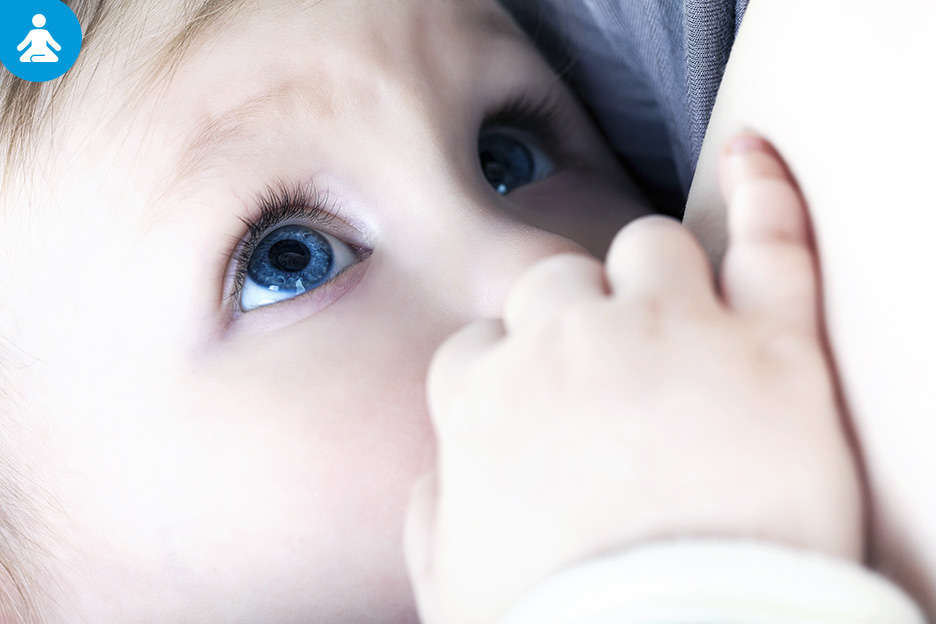The difficulties of breastfeeding: the other side of the coin
Are you breastfeeding your baby and having difficulty? Breastfeeding can indeed have certain pitfalls. However, as every problem has its solution, several tips can help you get back to breastfeeding your little one, without inconvenience.

BREASTFEEDING PROBLEMS
The benefits of breastfeeding, both for mother and child, are numerous. Breast-feeding can be wonderful, but this method of nutrition can have its share of inconveniences. These lead some women to give up breastfeeding when they would like to continue. Thus, knowing more about breastfeeding problems and how to deal with them can help many women.
Here is an overview of some problems that can arise during breastfeeding, and some quick tips.
ENGORGEMENT
Engorgement occurs during a milk rush or when the breast produces more breast milk than the baby drinks. Normally, the breast is flexible. However, an engorged breast is hard and tight to the touch. It is normal to experience mild to severe pain depending on the level of engorgement. Several tips can be followed to prevent or treat engorgement:
- Breastfeed your child more often.
- Squeeze the breast, before breastfeeding, to release milk if the nipple is too hard; this will make it easier for the baby to suckle.
- Squeeze the breast or use a breast pump after feeding if the baby is not drinking enough.
- Apply cold compresses or ice for 10 to 15 minutes to the breasts between feedings to reduce discomfort and pain.
- Apply warm compresses a few minutes before breastfeeding.
- Take acetaminophen or ibuprofen that is safe for the infant if the pain is too much.
Engorgement does not cause fever as a symptom. So, if your oral temperature exceeds 37.5 ° C, it is better to consult a doctor.
CHAPPING
Chapped skin, or crevices, are small cracks that appear on the nipples. They are often caused by a bad breastfeeding position. The chapped skin is rather painful for the mother. However, several tips can help you prevent or cure them when they are present:
- Consult your breastfeeding advisor to see if your breastfeeding position is correct.
- Start breastfeeding from the less painful breast.
- Make sure to stop your little one’s sucking before removing his mouth from the nipple by placing your finger in his mouth.
- Apply, then let a drop of milk dry on the nipple after breastfeeding.
- Apply a cracked ointment containing lanolin to the cracked nipple after breastfeeding (do not remove until the next drink to avoid further irritating the nipple).
- Take acetaminophen or ibuprofen that is safe for the infant if the pain is too much.
LILY OF THE VALLEY
Thrush is a fungus infection that can develop on the nipple or in the mother’s breast and in the child’s mouth. The mother can be affected without any symptoms being present in the baby and vice versa. However, both must always be treated at the same time to completely cure the infection. An important point to remember is that breastfeeding should be continued, even in the presence of thrush. The symptoms felt are as follows:
- burn;
- red, shiny and smooth appearance of the areola;
- pain in the breast, which may look like needles, any time of the day;
- small white spots in the infant’s mouth.
Thrush can be treated with gentian violet, which can be found over the counter in pharmacies. Drops of this purple liquid should be applied in the baby’s mouth before breastfeeding, using a cotton swab. One application per day is sufficient and the treatment should last between 4 and 7 days. If after a week of use gentian violet has not completely cured thrush, you will need to see a doctor for a different prescription treatment. Your pharmacist can also inform you about the treatments available for the treatment of thrush.
MASTITIS
Mastitis can be a complication of engorgement that is not well managed. This is a bacterial infection that can develop in one or both breasts. Mastitis can be recognized by its flu-like symptoms (eg, chills and fever) as well as a red, hot, swollen and painful breast. Having these symptoms means you need to see a doctor, as oral antibiotics are needed to treat mastitis. Here are some tips to follow if you have this infection:
- Continue to breastfeed despite the infection.
- Make sure to empty as much of the milk as possible in your breast after feeding.
- Start by breastfeeding on the less painful breast.
- Apply cold compresses or ice to the breasts for 10 to 15 minutes between feedings to reduce pain.
- Take acetaminophen or ibuprofen that is safe for the infant if the pain is too much.
- Make sure you are breastfeeding both breasts equally to prevent mastitis from developing.
THE BAD LATCH
Poor latching can lead to several breastfeeding complications, such as nipple pain and cracking. Correcting the breastfeeding position is essential to correct the problem. Indeed, if we apply the measures to treat the pain or chapping, you will feel relief, but the cause of the problem will not be resolved and it may come back. The baby should open his mouth wide so as not to cause pain in the nipple. To make sure your baby is latching on well, a breastfeeding counselor can help.
Only the five most common problems have been discussed, but others may arise as well. This way, the breastfeeding counselor, like the doctor and pharmacist, can help if you are having problems breastfeeding your little one. These should not interfere with your desire to breastfeed, because solutions exist to make this experience more enjoyable. So don’t wait to say “help! “.




















+ There are no comments
Add yours